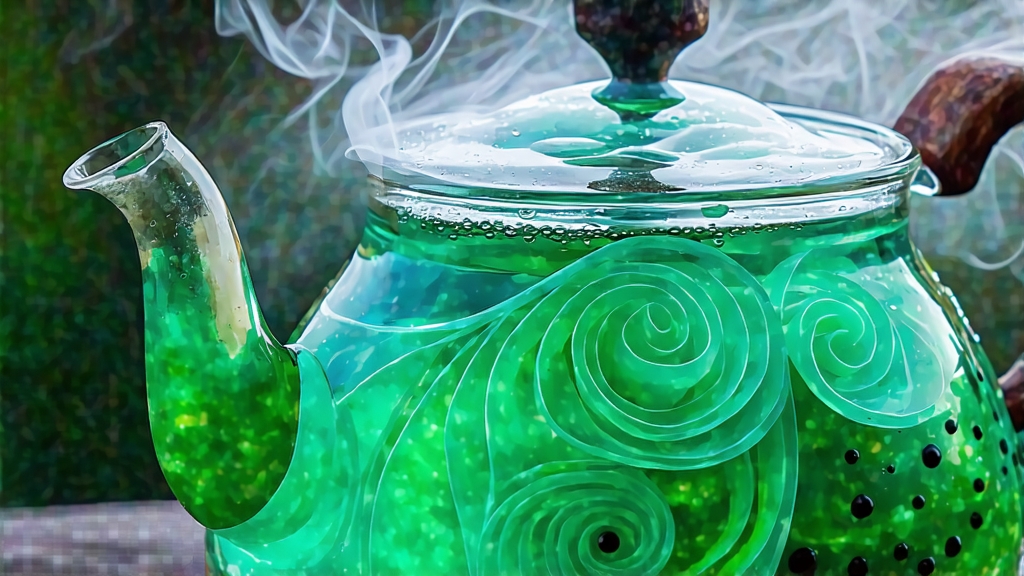
Biluochun, whose name translates literally to “Green Snail Spring,” is one of China’s ten most celebrated teas, yet it remains a quiet paradox: the smallest leaf among famous green teas, the earliest to be plucked each year, and the only one whose fragrance is traditionally described as a flirtation between ripe fruit and mountain wildflowers. To international drinkers accustomed to the grassy simplicity of sencha or the nutty depth of long jing, Biluochun offers a miniature drama that unfolds in a teacup: tiny, jade-colored spirals that dance, sink, rise again, and finally release a perfume so seductive it once caused an emperor to pause a military inspection. This article invites you to travel from the mist-locked isles of Taihu Lake to the charcoal-warmed woks of Dongting Mountain, learning how a bud no larger than a housefly is coaxed into one of the world’s most aromatic green teas.
-
Historical Echoes in a Snail-Shaped Leaf
The first written record appears in the Tang dynasty’s “Tea Canon,” but Biluochun’s mythic birth is set in the Kangxi reign (1662-1722). According to local chronicles, a tea picker on Dongting Mountain noticed an unusually intense fragrance emanating from a copse of wild tea trees interplanted with peach, plum, and apricot. The leaves she harvested were so small and curly that the villagers simply called them “Xia Sha Ren Xiang”—“scary fragrance.” When the Kangxi Emperor visited Suzhou in 1699, magistrate Song Luo presented the tea. The emperor found the name inelegant and rechristened it Biluochun, referencing the spiral (luo) shape, jade-green (bi) hue, and early spring (chun) harvest. From that moment the tea became a tribute item, traveling by canal and Grand Canal barge to the Forbidden City, wrapped in silk and lotus leaves to preserve its perfume. -
Micro-Terroir: An Island Garden in a Fresh-Water Sea
Modern Biluochun is still produced only in a 20-km² core zone on East and West Dongting Mountains, two hilly islands rising from Taihu Lake in Jiangsu Province. The lake’s 2,400 km² surface acts as a gigantic solar radiator, storing daytime heat and releasing it at night, thereby buffering temperature swings. Average daily amplitude in April is only 6 °C, allowing the plant to synthesize sugars and aromatic amino acids slowly. Meanwhile, fruit trees—peach, loquat, bayberry, and apricot—remain interplanted with tea at a ratio of roughly 3:1. Their spring blossoms coincide with the first flush, and petals fall onto the tea bushes, an accidental but decisive co-fermentation that amplifies the tea’s fruity top notes. Soils are quartz-sandy and acidic (pH 4.8–5.5), derived from weathered granite, well-drained yet water-retentive, forcing roots to struggle and concentrate flavor. -
Cultivars: Two Clans of the Same Family
Within the micro-zone farmers recognize two main cultivars.
• Dongting Small-Leaf #7: the traditional landrace, with leaves only 3 cm long at maturity, extremely frost-tender, yielding only 250 kg of finished tea per hectare but possessing the highest concentration of linalool and geraniol, the molecules responsible for honeysuckle and peach aromas.
• Dongting Wuniuzao: a 1970s selection that buds seven to ten days earlier, tolerates cooler nights, and produces 400 kg per hectare; its fragrance is slightly more vegetal, closer to fresh fava bean, making it the workhorse of commercial grades. Both belong to the sinensis var. sinensis species, yet their spring polyphenol ratios diverge enough that tasters can often distinguish them blind. -
Plucking: One Bud, One Leaf, Before Qingming
The harvest window opens around 20 March and closes before 5 April, the traditional Qingming festival. Standard is “one bud plus one just-unfolded leaf,” no longer than 2.5 cm, picked between 5 a.m. and 9 a.m. while dew still glistens. Experienced pickers use a twisting snap rather than a pinch, preventing the bruising that would oxidize the leaf edge. Leaves are placed in shallow